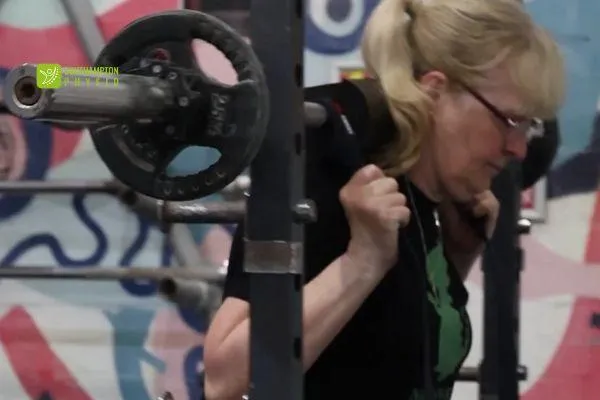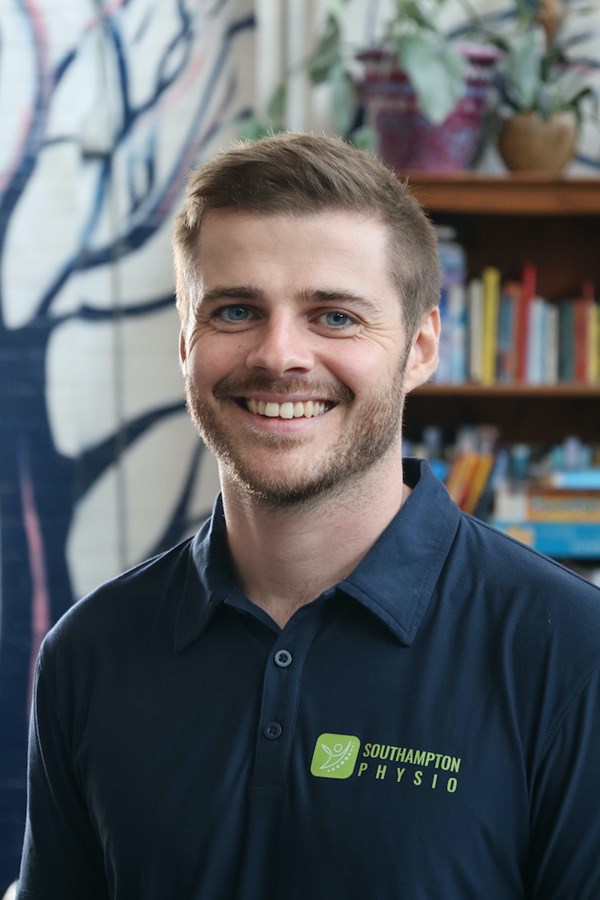
Physio Personal Training: Why Tracey’s “Stronger Than Ever” Isn’t a Fluke
Physio Personal Training: Why Tracey’s “Stronger Than Ever” Isn’t a Fluke
Tracey calls it “physiotherapy personal training.”
We call it doing things properly.
When we first met, Tracey wasn’t looking to get strong. She just wanted to stop falling apart.
She had a history of back pain that made her feel fragile.
Running gave her heel pain.
Swimming flared up her shoulder.
And no matter how careful she was - something always went wrong.
She’d seen physios on and off for years. And yes, each time helped a bit.
But she felt like she was playing whack-a-mole with her body.
Fix one thing.
Flare another.
Rinse and repeat.
Until this time.
Because this time, we didn’t just treat the bits that hurt.
We rebuilt the whole system.
And today? Tracey deadlifts 45kg with ease.
She doesn’t think twice about lifting shopping, doing housework or going for a run.
Her husband now trains with her. Her kids cheer her on. And pain - once her daily companion - is mostly a memory.
So what changed?
Let’s unpack it.
From protection to progression: why feeling fragile wasn’t her fault
Tracey’s story isn’t unusual.
When you’ve been told to “be careful” for years - because of your back, your joints or that niggly shoulder - it’s natural to start feeling breakable. You tiptoe around movement. You stop lifting things. You avoid certain exercises. And over time, your world shrinks.
The trouble is, while that protective mindset feels safe, it often does more harm than good.
Avoidance leads to deconditioning. And that deconditioning makes future injuries more likely - not less.
It’s a pattern we see all the time: injury → rest → fear → weaker → reinjury.
Breaking the cycle doesn’t come from pushing harder.
It comes from training smarter.
And there’s solid research to back that up. Study after study shows that strength training - when personalised and progressed carefully - can improve function, reduce pain and help prevent flare-ups in conditions ranging from back pain to rotator cuff injuries. It works not because it targets the pain directly, but because it makes the whole body more capable and confident.
In Tracey’s case, we focused less on “fixing” and more on rebuilding strength, tolerance and trust. The result? Fewer flare-ups. More freedom. And a mindset shift that changed everything.
Why “physiotherapy personal training” is different
Most people think of physio as short-term.
You tweak something, you get a few sessions, you leave with a sheet of exercises.
That’s fine for minor sprains.
But not for people like Tracey.
Tracey didn’t need quick fixes.
She needed a plan.
A strength-based, long-term, personalised plan that accounted for:
Her history of pain
Her current injuries
Her day-to-day routine
Her energy levels
And crucially - her goals
This wasn’t physio that ended once she could bend forward again.
It was coaching that kept going until her whole body was more resilient.
We trained once a week.
She did some homework.
Her husband joined in.
And we adjusted along the way, based on how she felt.
No cookie-cutter protocols.
No “three sets of ten” because it’s in a textbook.
Just honest, science-backed progression tailored to her.
And that progression matters. Research consistently shows that people do better - especially with persistent or recurring pain - when they’re coached by someone who understands both injury and strength. It’s not just about knowing exercises. It’s about knowing when to nudge, when to pause and how to build trust in the process.
The turning point: when Tracey stopped worrying
One of the biggest breakthroughs came not in the gym, but at home.
“I don’t think about my back anymore,” she said. “And I tell my family to stop fussing when I’m lifting things.”
That mindset shift - from bracing for pain to trusting her body - is the real win.
Yes, she can deadlift.
Yes, she’s running again.
But the biggest transformation is internal.
She’s no longer scared of her own body.
She’s proud of it.
That kind of confidence doesn’t come from manual therapy or rest.
It comes from doing hard things - gently, progressively and consistently.
So what does “physio personal training” actually look like?
A proper assessment: Not just “where does it hurt?” but “how do you move, recover and train?”
Individualised strength plan: Built around your goals, limitations and lifestyle - not a one-size-fits-all handout.
Coaching and progression: Because bodies adapt. And confidence grows with capacity.
Adaptability: Life changes, pain flares, energy dips. Your plan adjusts with you.
Consistency over intensity: One session a week + small home workouts was enough for Tracey. The magic was in showing up.
This approach - grounded in the research but built around real life - is why it worked.
And why it lasts.
A few takeaways if you relate to Tracey
Being careful isn’t always helpful. Strength - not caution - is what keeps you safe long term.
Old injuries don’t mean you’re broken. They mean you need a better plan, not less movement.
You don’t need to train like an athlete. You just need to train like a human who wants to feel better.
Good physio isn’t just treatment - it’s coaching. Someone who sees the whole picture and helps you move forward.
Final thoughts
Tracey’s story isn’t about perfection. She still gets the odd niggle. But those niggles don’t derail her life anymore.
She doesn’t live in fear of her back “going.”
She doesn’t avoid the stairs.
She doesn’t need to explain herself in fitness spaces.
She moves, she trains, she lives.
And if that resonates with you - or someone you care about - get in touch.
We’d be happy to tell you more about our approach.
